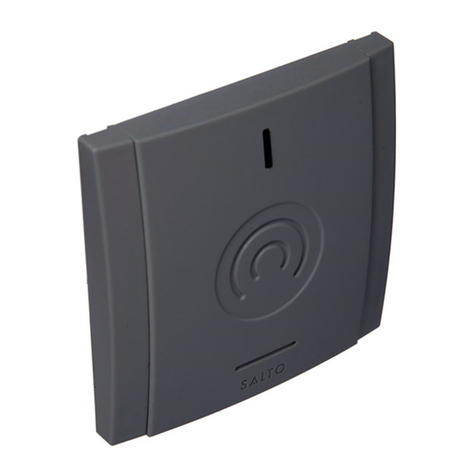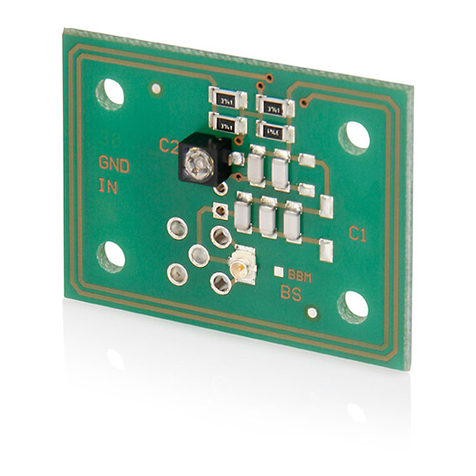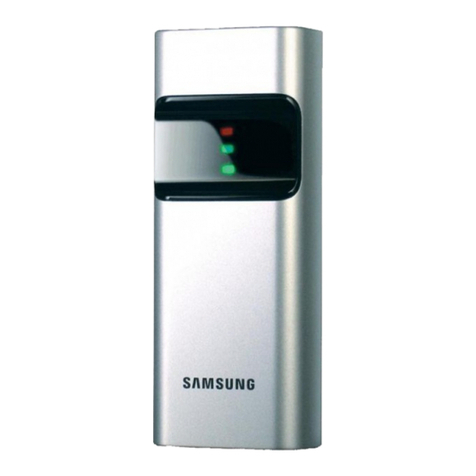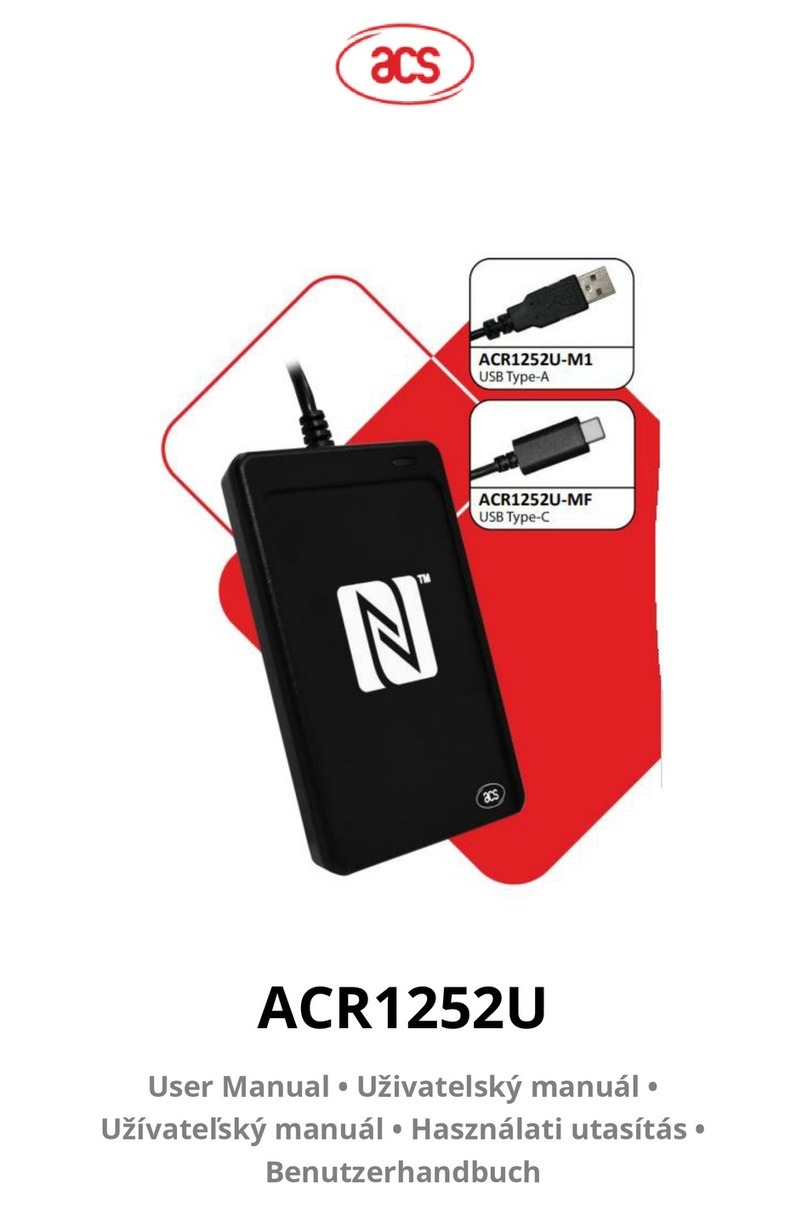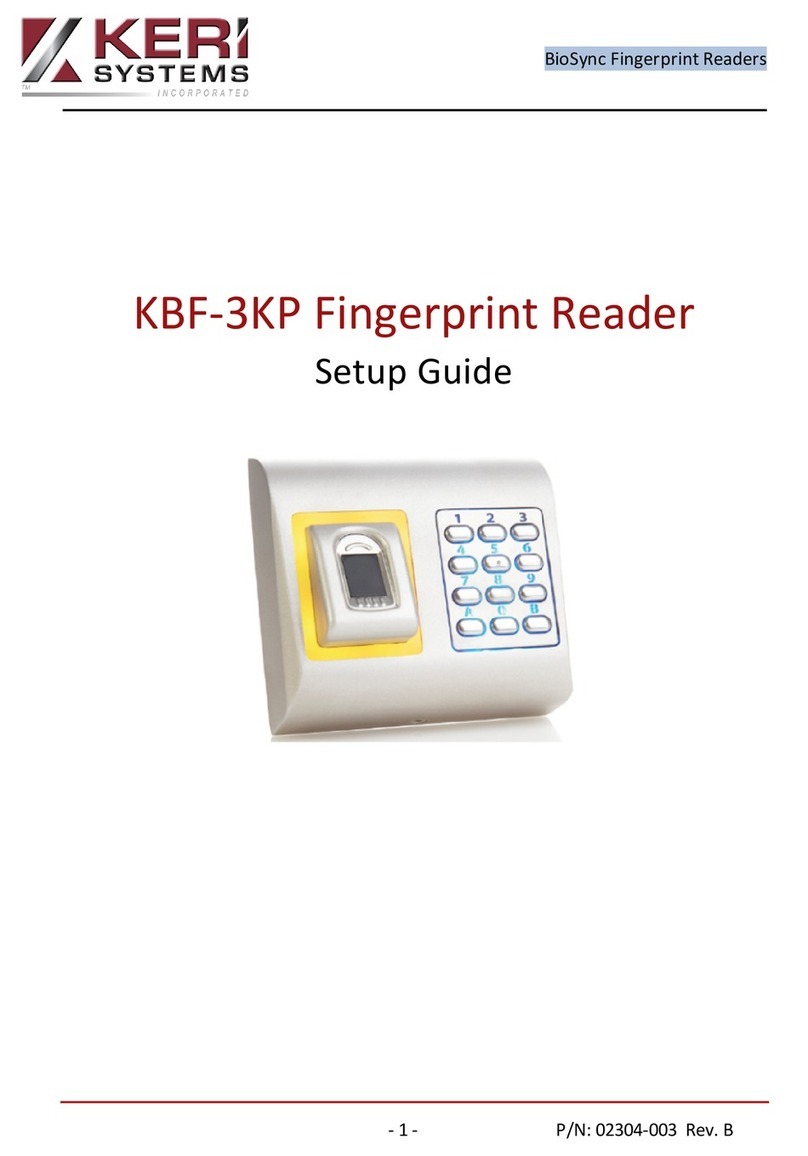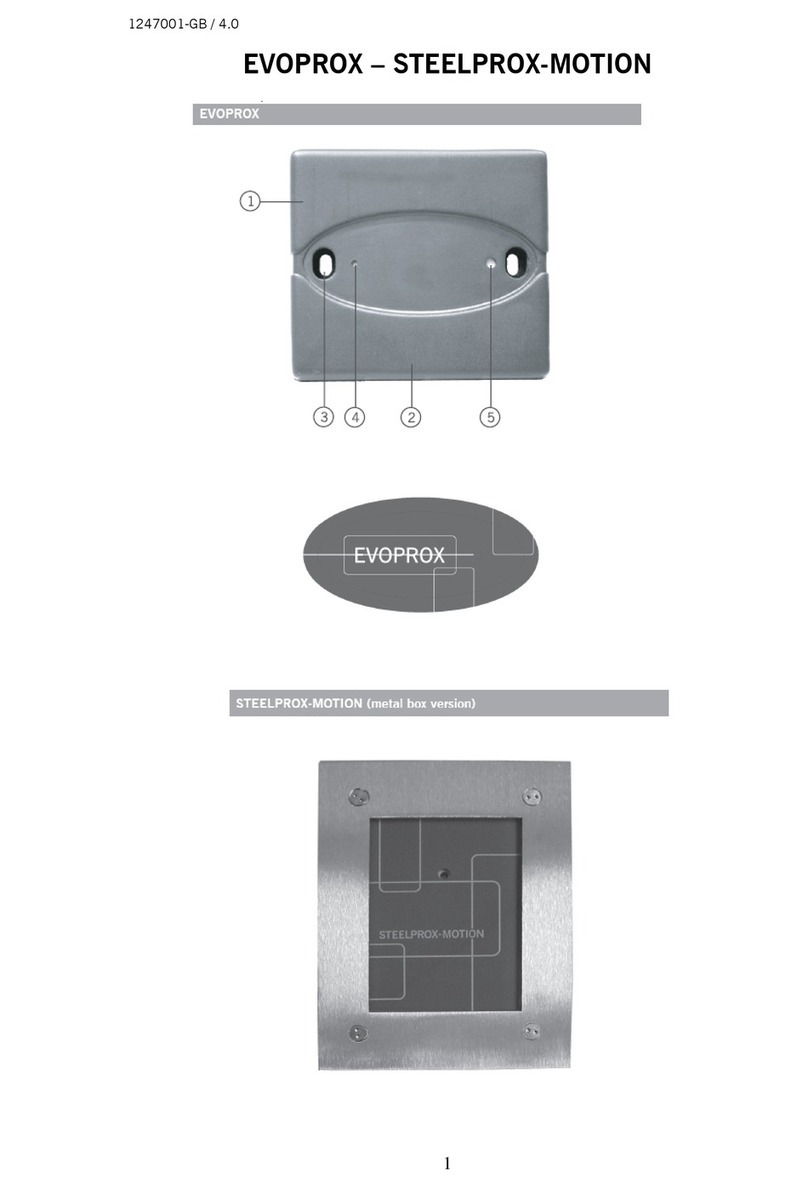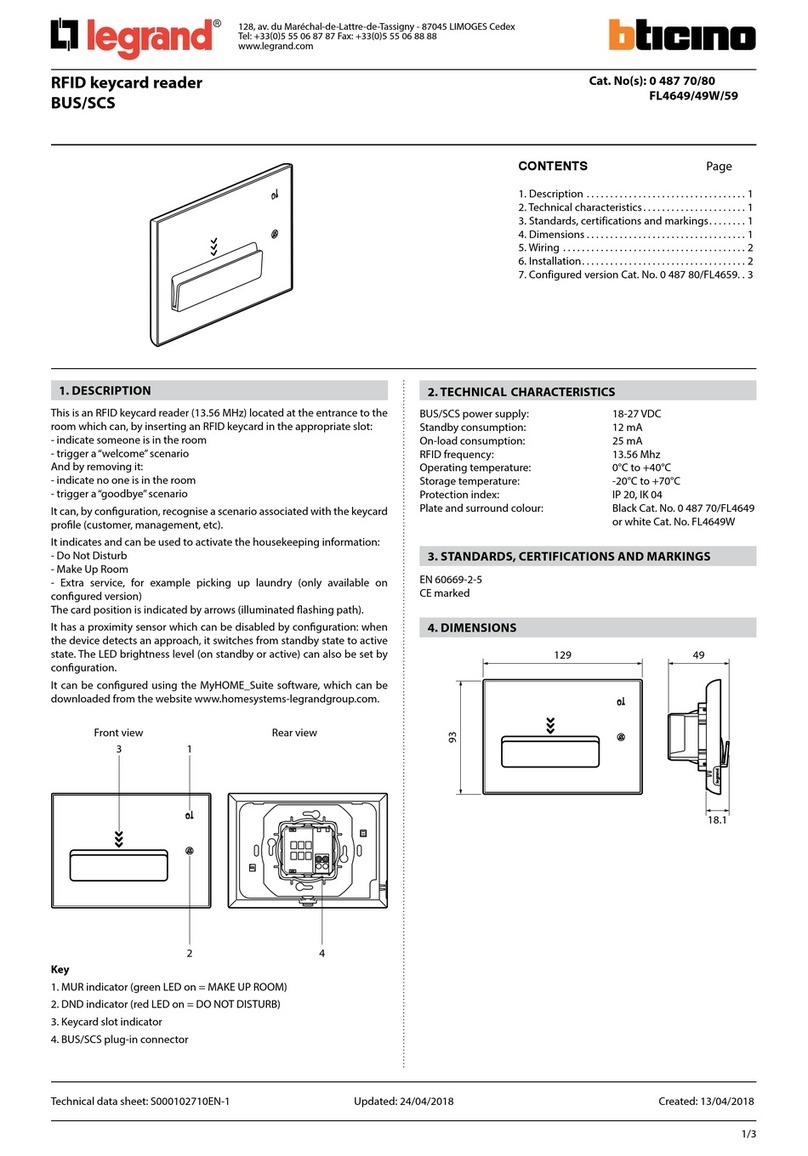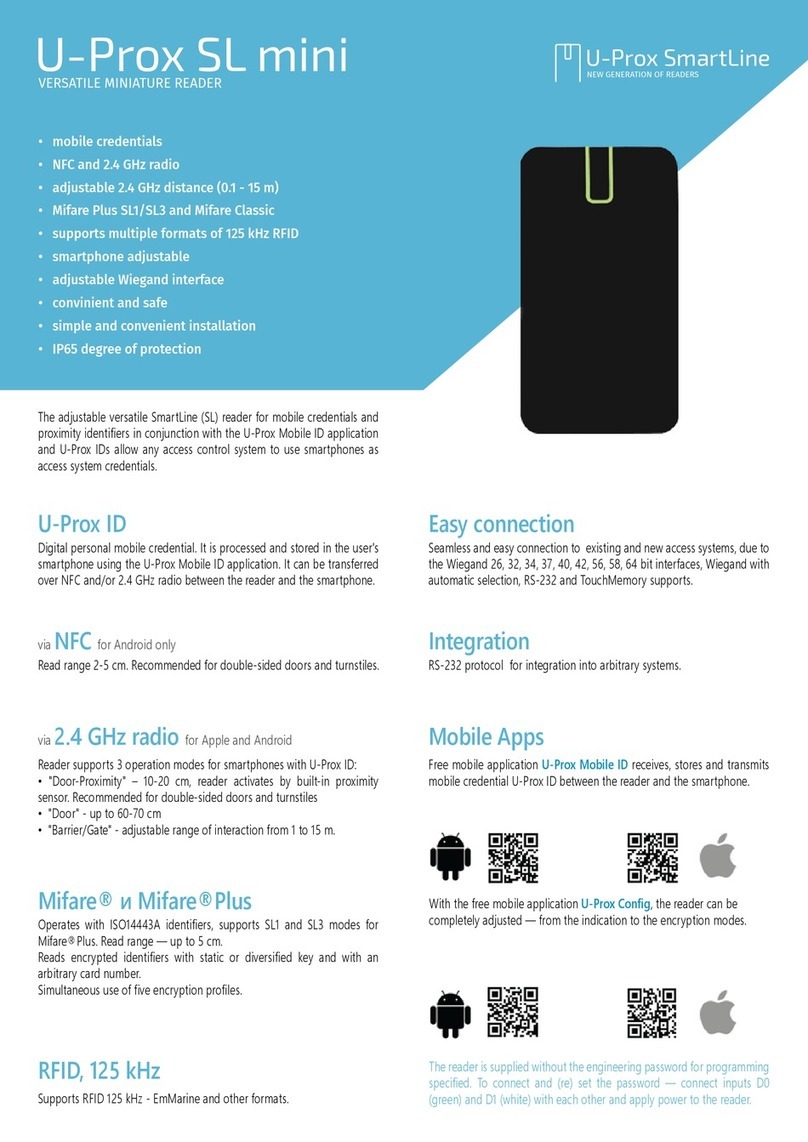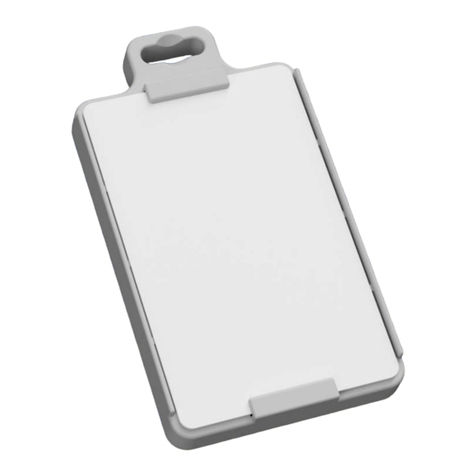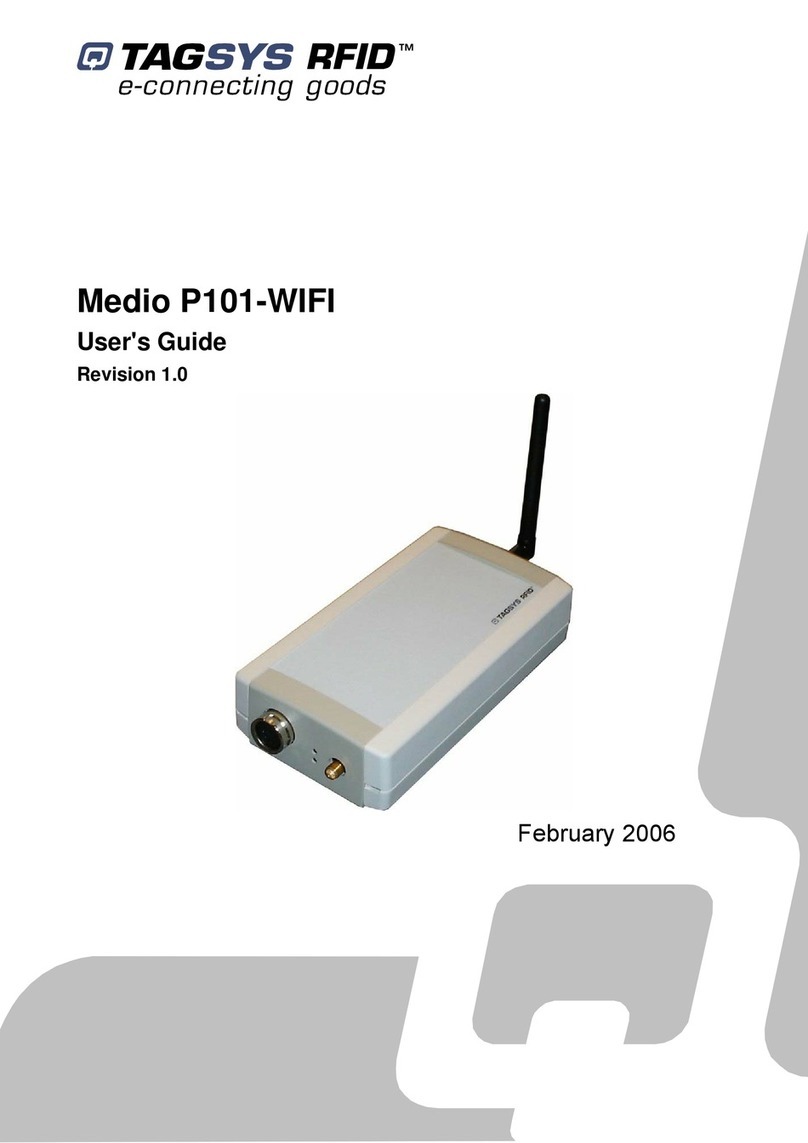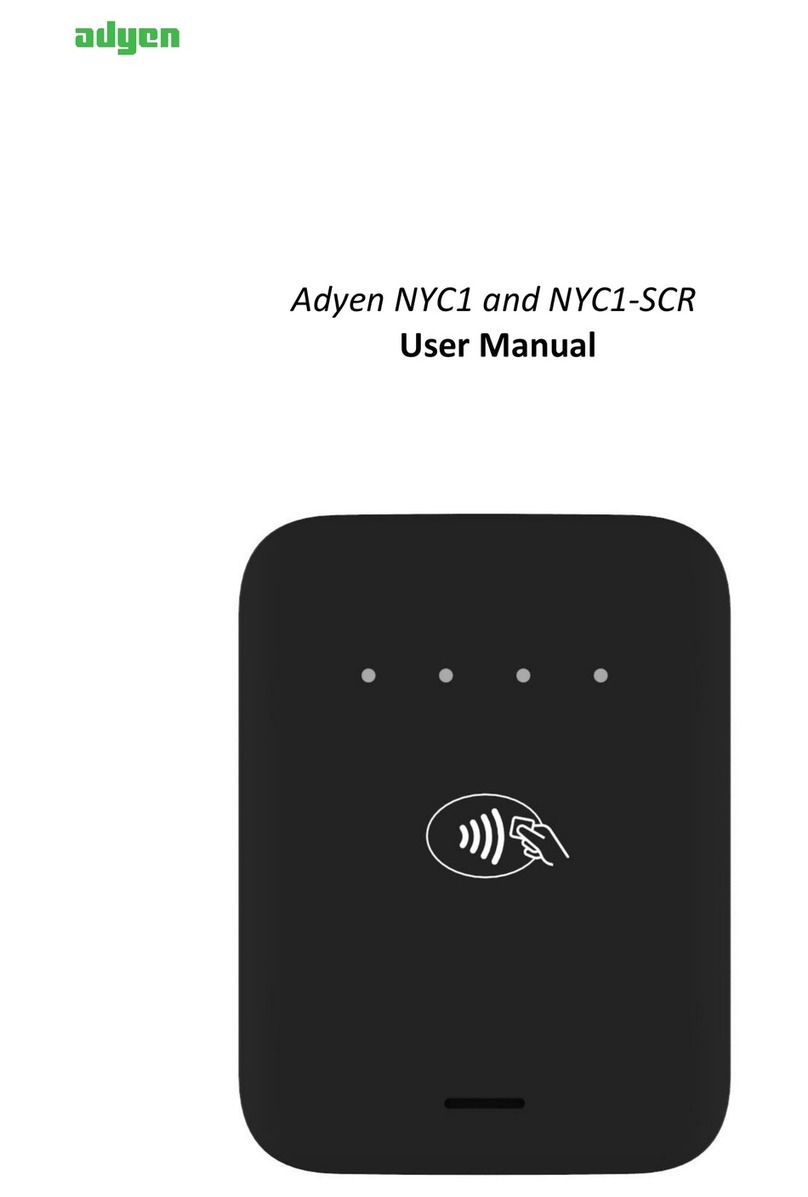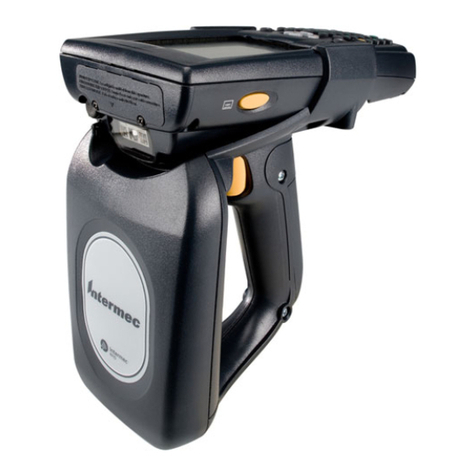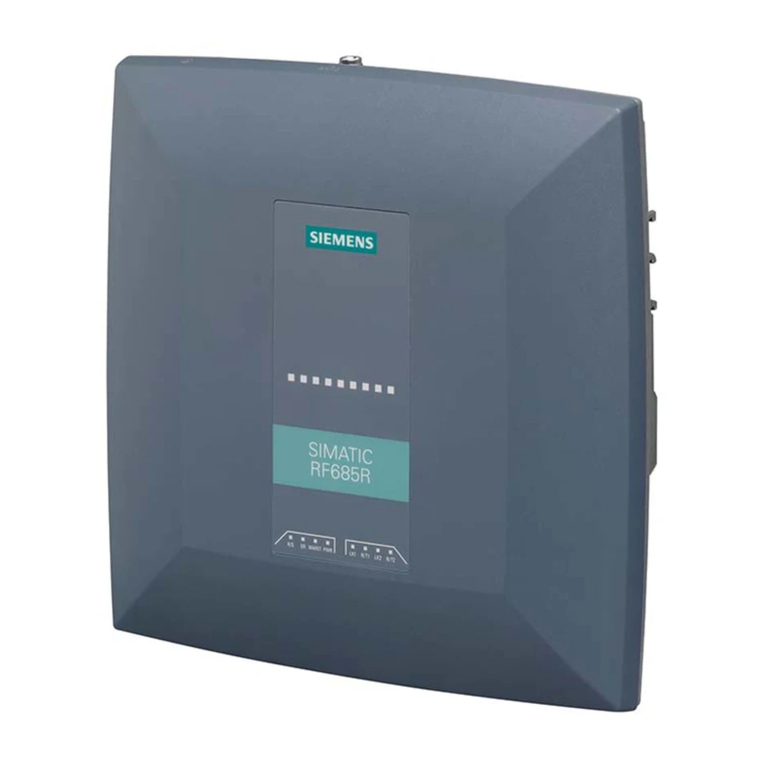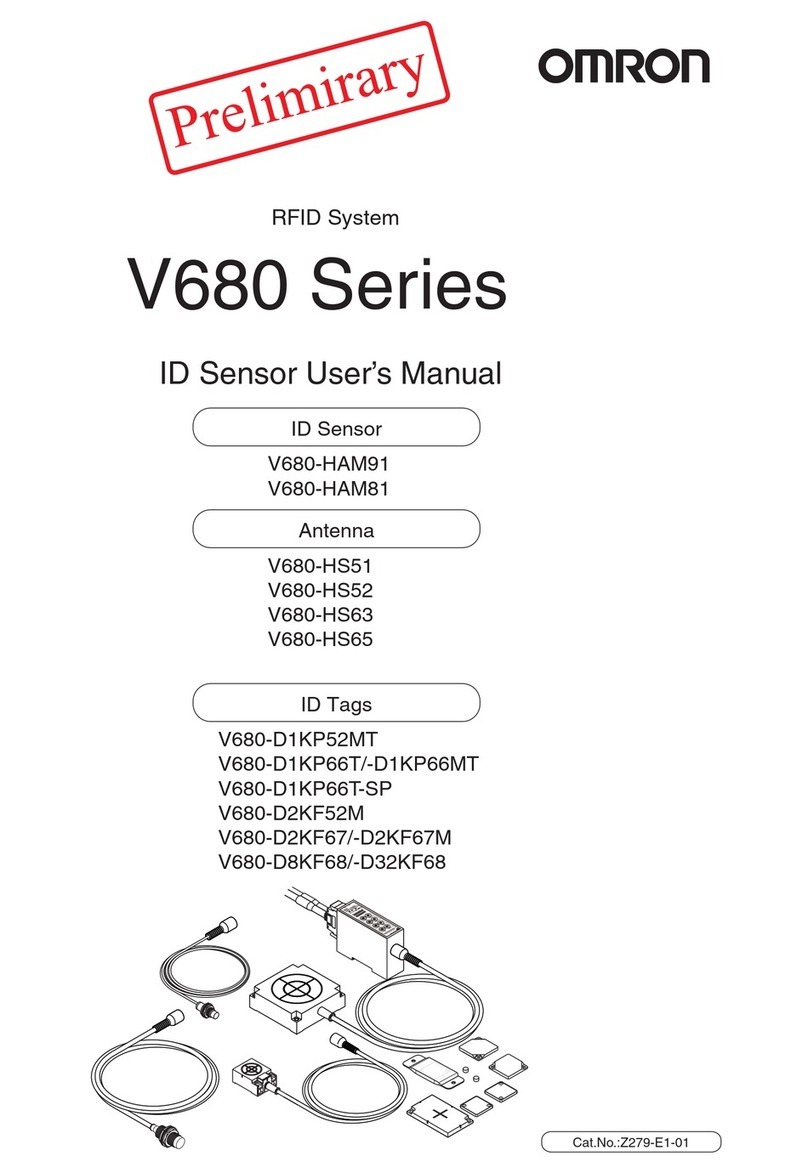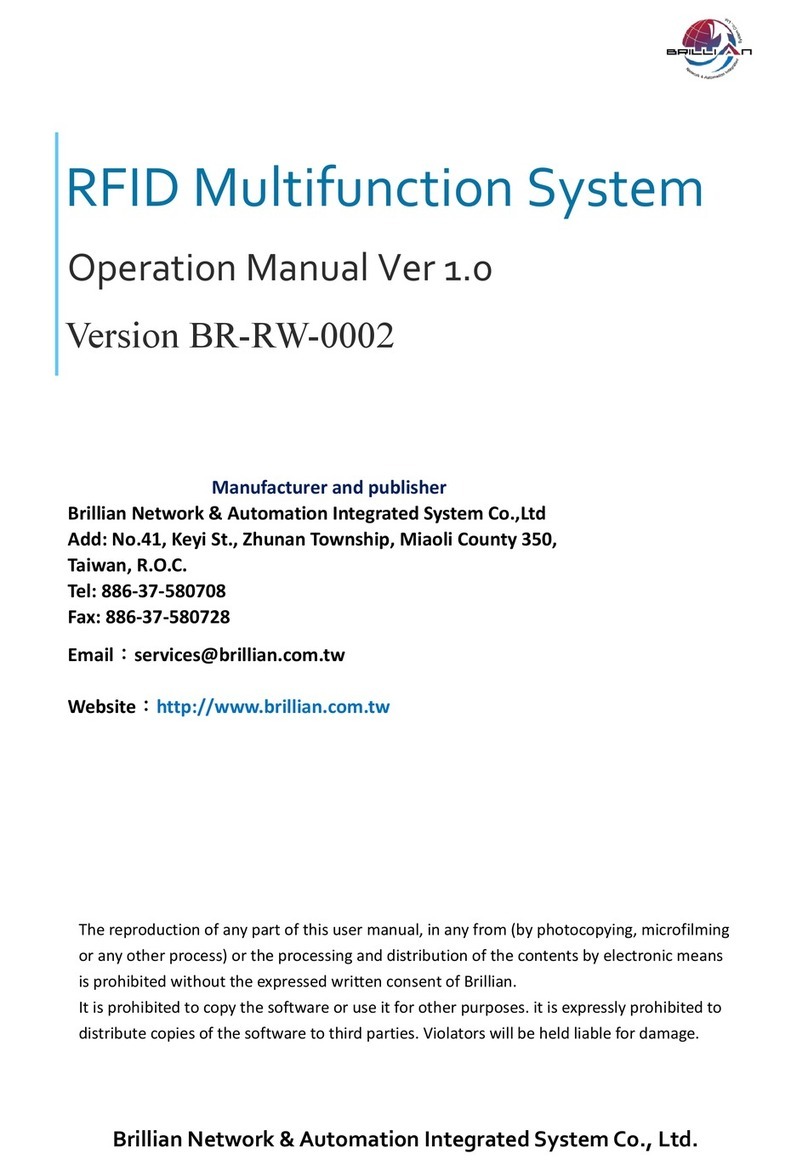HERMOS LFM 4x Reference guide

Customer manual
LFM 4x Reader
RFID
WE GENERATE SOLUTIONS
LFM 4x Reader Rev1.4
2
www.hermos.com
0. Table of contents
0. Table of contents ..................................................................................................................................2
1 . I n t r o d u c t i o n ...............................................................................................................................6
1.1 Using the device 7
2. Version history......................................................................................................................................8
3. Used abbreviations and designations...................................................................................................8
4. General instructions..............................................................................................................................9
4.1 Objective of the product manual 9
4.2 Warranty and liability 9
5. Safety instructions and warnings........................................................................................................10
5.1 Scope and symbols 10
5.2 Safety symbols - according to DIN 4844-2 10
5.2.1 Mandatory signs 11
5.2.2 Warning signs 11
5.2.3 Prohibition signs 11
5.2.4 Other signs 12
5.3 Obligations 12
5.3.1 Operator’s obligations 12
5.3.2 Responsibilities of operating personnel 13
5.3.3 ESD Instructions 13
5.4 Residual risks 14
5.5 Supplemental instructions 15
5.5.1 Regulations and certifications 15
6. Functional description.........................................................................................................................16
6.1 General information 16
6.2 Basic functions - operating modes 16
6.2.1 Normal operation 16
6.2.2 Polling mode 16
6.2.4 Test module 16
6.3.1 Top view 17
6.3.2 Front view 18
6.3.3 Back view 19
6.4 Technical Specification 20
6.4.1 Power supply and current input 20
6.4.2 Device labels 21
6.4.3 Device Label FCC ID 2AP5OLFM-4x 21
Feh

Customer manual
LFM 4x Reader
RFID
WE GENERATE SOLUTIONS
LFM 4x Reader Rev1.4
3
www.hermos.com
ler! Textmarke nicht definiert.
6.4.4 Test mode sticker 22
7. Installation...........................................................................................................................................23
7.1 Safety instructions 23
7.2 Qualified installation personnel 24
7.3 Unpacking 24
7.4 Mounting the device 25
7.5 Installing the antenna 26
7.5.1 Positioning the antenna 26
7.5.2 Rod Antenna M dimensions 27
7.5.3 Connecting the antenna 27
7.6 Power Supply 27
7.7 DIP-switch 28
7.8 RS232 connection 29
8.Commissioning ....................................................................................................................................30
8.1 Operating conditions 30
8.2 The serial interface parameters 30
8.3 Parameter of the ethernet interface 31
8.3.1 Change networksettings with DeviceDiscoverer 31
8.3.2 Firmware update with DeviceDiscoverer 33
8.3.3 Test Device with DeviceDiscoverer 34
9. Operating ............................................................................................................................................37
9.1 Operating personnel 37
9.2 Protocol change 37
9.2.1 General 37
9.2.2 Automatic protocol detection 37
9.3 Addressing the antenna port 38
9.4 Customer Factoryparametersets 39
10. ASCI-I1 Communication protocol .....................................................................................................40
10.1 Structure of the communication protocol 40
10.2 Packet content 40
Packet header 40
Message data 41
Packet end 41
10.3 Data elements 42
10.4 Protocol Commands 45
10.4.1 X - Read data 47
10.4.2 R –Automatic read 48
10.4.3 W - Write data 49

Customer manual
LFM 4x Reader
RFID
WE GENERATE SOLUTIONS
LFM 4x Reader Rev1.4
4
www.hermos.com
10.4.4 G –Query parameter 50
10.4.5 F –Query parameter 51
10.4.6 P –Set parameter 52
10.4.7 N –Reset 53
10.4.8 e –Error message 54
10.4.9 E –Error message 54
10.4.10 H –Heartbeat 55
10.4.11 V –Query software version 56
10.4.12 L - Lock data area 57
10.4.13 I –Adjust RF module 58
10.4.14 J –RF module Queries the vote 59
10.4.15 A –Sensor event object removed 60
10.4.16 B –Sensor event object detected 61
10.4.17 O –Set output 62
10.4.18 Q –Querying the status of the inputs and outputs 63
10.5 Parameter 64
10.6 Message examples 67
10.7 Error Codes 69
10.8 Wiring of the outputs 71
10.8.1 ASC-W1 Mode: Reader in operation mode and sensor triggered reading 71
10.8.2 ASC-W1-Mode: Reader in operation mode and external triggeredreading 73
10.9 ASCII –table 75
11.SECS / HSMS Communications protocol..........................................................................................78
11.1 Structure of a message 78
11.2 Directory Data Elements 81
11.3 Protocol commands 87
11.3.1 Stream 1 (system state) 88
11.3.2 Stream 2 (system control) 89
11.3.3 Stream 3 (Material-state) 91
11.3.4 Stream 5 (Exception handling) 93
11.3.5 Stream 9 (system error) 93
11.3.6 Stream 18 (control and data transfer) 95
11.4 Parameter 101
11.5 Examples of a SECS / HSMS message 109
11.6 Error codes 110
12. Service and Troubleshooting...................................................................................................111
12.1 General information 111
12.2 Troubleshooting personnel 111

Customer manual
LFM 4x Reader
RFID
WE GENERATE SOLUTIONS
LFM 4x Reader Rev1.4
5
www.hermos.com
12.3 Safety instructions 112
12.4 Error indications on the device 113
12.5 No communication with the reading device 113
12.6 Software releases 114
12.7 Customer service 115
13. Disassembly and storage ........................................................................................................116
13.1 Disassembly 116
13.2 Storage 116
14. Transport and disposal ........................................................................................................116
14.1 Transport 116
14.2 Disposal 116

Customer manual
LFM 4x Reader
RFID
WE GENERATE SOLUTIONS
LFM 4x Reader Rev1.4
6
www.hermos.com
1. Introduction
These operating instructions correspond with the "Radio and Telecommunications
Terminal.Equipment Act and Directive 2014/53/EU (RED) "
These operating instructions are intended for the operator who must pass these on to the personnel
responsible for installation, connection, use, and repairs of the machine.
The operator must ensure that the information contained in these operating instructions and in the
accompanying documents has been read and understood.
The operating instructions must be kept at a known place that is easy to reach, and they must be
consulted if there is the slightest doubt.
The manufacturer assumes no responsibility for damage to persons, animals, or objects or to the
unit itself arising from the improper use or the disregard or insufficient consideration to the safety
criteria contained in these operating instructions or based on modifications of the unit or the use of
unsuitable replacement parts.
The copyright for the operating instructions lies solely with
HERMOS AG
Track & Trace - RFID Division Gartenstr. 19
95490 Mistelgau
or its legal successor.
Reproduction or circulation of this document to third parties only by express written permission of
copyright holder. This also applies if only excerpts of the document are copied or circulated.
These same conditions apply to the disclosure of the document in digital format.
As of: July - 2018

Customer manual
LFM 4x Reader
RFID
WE GENERATE SOLUTIONS
LFM 4x Reader Rev1.4
7
www.hermos.com
1.1 Using the device
The device is exclusively used to read and write passive LF transponders.
Any other use of the machine or any use beyond its intended purpose is considered non-intended
and thus improper.
In this case, the device safety and the device protection provided may be compromised. HERMOS
AG is not liable for damages resulting from such use.
The device was developed for the use in an industrial environment as a built-in device in other
systems. It was not developed as a stand-alone or mobile device in a non-industrial environment,
such as dome- stic, vehicle or open air use.
Intended use also includes the following:
•Following all the operating instructions
•Following all the safety instructions
Improper use, which can endanger the unit, the user and third parties, include:
•The use of the device contrary to its intended use
•Changes to the device as well as attachments and conversions
•Operating the unit when there are obvious problems
WARNING
Danger of injury due to unauthorised modifications
There are risks from unauthorised modifications on the device.
Only original spare parts from the manufacturer must be used. No
modification, attachment or conversion may be performed on the device
without the permission of HERMOS AG.
WARNING Danger of injury and interruption of operation due to improper use
There are risks through the improper use of the device.
The device must only be used according to its intended use.

Customer manual
LFM 4x Reader
RFID
WE GENERATE SOLUTIONS
LFM 4x Reader Rev1.4
8
www.hermos.com
2. Version history
Version
Date
Author
Amendments
1.0
12.05.2017
HERMOS AG, MZ
Initial version of customer documentation
1.1
10.07.2017
HERMOS AG, RK
Document revised and added parameters
1.2
19.01.2018
HERMOS AG, RK
ASC-W1 mode documented
1.3
09.07.2018
HERMOS AG, RK
Factoryparametersets 4 and 5
documented
1.4
26.02.2019
HERMOS AG, RK
Chapter 9.3 and Reader-ID revised
Chapter 9.4 Factoryparametersets revised
Chapter 10.5 und 11.4 Changes of
parameters
Chapter 12.6 added softwarerevision V1.5
Chapter 8.3 revised
3. Used abbreviations and designations
RFID
Radio Frequency Identification
LF
Low Frequency 134,2 kHz
SEMI
Semiconductor Equipment and Materials
SECS
SEMI Equipment Communications Standard
HSMS
High-Speed SECS Message Service
PoE
Power over Ethernet
DHCP
Dynamic Host Configuration Protocol

Customer manual
LFM 4x Reader
RFID
WE GENERATE SOLUTIONS
LFM 4x Reader Rev1.4
9
www.hermos.com
4. General instructions
All previous versions of this document lose their validity with the issue of this version.
We compiled the information in this document according to the best of our ability.
HERMOS AG does not guarantee the accuracy and completeness of the information
provided in this document and is also not liable for consequential damages based on
faulty or incomplete information.
4.1 Objective of the product manual
The product manual serves as support and contains all the necessary information
that must be followed for general safety, transport, installation and operation.
The product manual with all safety instructions (as well as all additional documents) must be:
•Followed, read and understood by all persons working with the unit (especially
knowledge of the safety instructions)
•Easily available at all times to all persons
•Consulted if even the slightest doubt arises (safety)
Objectives:
•Prevent accidents
•Increase the service life and reliability of the unit
•Reduce the costs of production downtime
4.2 Warranty and liability
The „General Terms and Conditions of Sale and Delivery“ of HERMOS AG shall apply.
The warranty period is 24 months beginning with the delivery of the device, which is
verified by the invoice or other documents.
The warranty includes repairs of all damages to the unit that occur during the warranty
period, and were clearly caused by material or manufacturing defects.
Warranty and liability claims in the event of personal injury or property damage are
excluded if they arise from one or more of the following causes:
•Improper use of the unit
•Disregarding the information in the operating instructions
•Unauthorised structural modifications of the unit
•Insufficient maintenance and repairs
•Disaster events due to impact with foreign objects or force majeure

Customer manual
LFM 4x Reader
RFID
WE GENERATE SOLUTIONS
LFM 4x Reader Rev1.4
10
www.hermos.com
5. Safety instructions and warnings
5.1 Scope and symbols
Follow the general safety instructions as well as special safety instructions included
in the chapters.
The unit was built according to state-of-the-art technology and recognised safety regulations. In
order to prevent danger to life and limb of the user, third parties, or the unit, only use the unit for its
intended purpose and in perfect condition with regard to safety.
Bodily injuries and/or property damages resulting from non-compliance with the
instructions pro- vided in the operating instructions are the responsibility of the
company operating the unit or the assigned personnel.
Faults that may compromise safety must be eliminated immediately.
DANGER Risk of death, injury and property damage.
There is a risk of danger due to disregard of the product manual and
the safety information contained therein.
Read the product manual carefully before putting the unit into
operation for the first time. Fulfil all required safety conditions.
5.2 Safety symbols - according to DIN 4844-2
The following special safety symbols in accordance with DIN 4844-2 are used at the
corresponding passages in the text of this product manual and require special attention
depending on the combi- nation of the signal word and symbol.
DANGER Risk of injury due to disregarding the safety symbols.
Risks exist when disregarding warnings in the
operating instructions. Follow all warnings.

Customer manual
LFM 4x Reader
RFID
WE GENERATE SOLUTIONS
LFM 4x Reader Rev1.4
11
www.hermos.com
5.2.1 Mandatory signs
Observe additional
information
Use safety goggles
Wear ear protection
Wear safety shoes
Important note
5.2.2 Warning signs
Warning of a hazardous
area
Warning of hazardous
electrical voltage
Warning of electromagnetic
radiation
Warning of flammable
substances
Warning of explosive
substances
Warning of electrostatically
sensitive components
5.2.3 Prohibition signs
Unauthorised access is
prohibited
Fire, open flame and
smoking prohibited
Switching prohibited
Prohibited

Customer manual
LFM 4x Reader
RFID
WE GENERATE SOLUTIONS
LFM 4x Reader Rev1.4
12
www.hermos.com
5.2.4 Other signs
Verpackungsmaterial vor-
schriftsgemäß entsorgen
Recycling
5.3 Obligations
5.3.1 Operator’s obligations
A safe condition and use of the unit is a requirement for a safe operation of the unit. For that rea-
son, the operator has the obligation to ensure that the following points are adhered to:
The unit may only be operated by trained and authorised personnel.
Prohibitunsafeordangerousworkingmethods!Ifnecessary,checktheconduct
and actions of its personnel!
Have personnel who must be trained, instructed or within the scope of general
training work only on the unit under the supervision of an experiencedperson!
Havethepersonnelconfirmbytheirsignaturethattheoperatinginstructionshave
been understood!
Preciselyestablishresponsibilitiesaccordingtothevarioustask
areas (operation, installation)!
Operatingpersonnelmustberequiredtoimmediatelyreportanyoccurringand
identifiable safety deficiencies to theirsuperior!

Customer manual
LFM 4x Reader
RFID
WE GENERATE SOLUTIONS
LFM 4x Reader Rev1.4
13
www.hermos.com
5.3.2 Responsibilities of operating personnel
The operating personnel are obligated to contribute to the prevention of work accidents and their
consequences by their personal conduct.
Risk of injury due to insufficient personnel qualifications
WARNING
There are dangers to personnel and the proper operation due to
inadequately qua- lified personnel.
Only trained personnel may operate the unit.
New operating personnel must be instructed by the existing operating
personnel. The operator must precisely regulate the personnel’s areas
of responsibility, com- petence, and monitoring precisely.
The personnel for the areas of responsibility mentioned above must
have the corresponding qualification for this work (training, instruction).
If necessary, this can be done by the manufacturer on behalf of the
operator. In case of disregard, all warranty claims are void.
5.3.3 ESD Instructions
CAUTION Static electricity can damage electronic components in the unit. All
persons who install or maintain the unit must be trained in ESD
protection.
ESD protective measures must be applied when opening the unit.
Disconnect the power supply prior to removing or adding components!
Observe the basic principles of ESD protection
Take the appropriate ESD precautionary measures

Customer manual
LFM 4x Reader
RFID
WE GENERATE SOLUTIONS
LFM 4x Reader Rev1.4
14
www.hermos.com
5.4 Residual risks
Despite all precautionary measures taken, there may still be residual risks that are not apparent.
Adhering to the safety instructions, the intended use, and the product manual as a whole can re- duce
residual risks.
DANGER
ATTENTION
DANGER
WARNING
Danger caused by electrical current
Electrical residual energy remains in lines, equipment and devices after
shutting down the device.
Only qualified electricians may perform work on the electrical supply system.
Disconnect the unit from the power supply system if active parts of the unit
can be accessed using tools. Access is only permitted by authorised
personnel.
Regularly check the electrical equipment of the unit. Regularly check all
moving cables for damage within the scope of maintenance and repair work.
Dangers of fire and explosion
There is a risk of fire and explosions in the vicinity of the device.
Smoking, exposed flames and fire are strictly prohibited in the vicinity of the unit.
Do not store any flammable liquids within the hazardous area of the device.
A fire extinguisher must be kept in the vicinity of the device.
Warning of electromagnetic radiation
Electromagnetic radiation develops when transmitting and receiving data. Arrange
the antenna in such a position that it is not in the vicinity or make
contact with the human body while transmitting.
The device satisfies the standard EN50364:2010 (Human Exposure).

Customer manual
LFM 4x Reader
RFID
WE GENERATE SOLUTIONS
LFM 4x Reader Rev1.4
15
www.hermos.com
5.5 Supplemental instructions
Readandunderstandallsafetyandoperatinginstructionspriortoinstallingandoperating
the device.
This documentation was written for specifically trained personnel. The installation,
operationanderrorhandlingmayonlybecarriedoutbyspecificallytrainedpersonnel.
Keep these instructions. Keep this documentation in a location that is accessible to all
personnel involved with the installation, use, and error handling of thedevice.
Follow all warnings. Follow all warnings onand in the device and inthe documentation.
Install the unit only in accordance with the manufacturer‘s instructions.
Use only the accessories and cables from the manufacturer.
Troubleshootingthatisnotdescribedinthechapter
a
serviceandtroubleshootingmay
only be performed by themanufacturer.
When connecting cable connections, only pull on the plug and not on the cable.
Only use spare parts specified by themanufacturer.
The provisions of the accident-prevention regulations of the government safety organisations
always apply to all work on the unit.
Applicable, legally binding accident prevention regulations.
Applicable binding regulations at the place ofuse
Technical standards for safety and professional work
Existing environmental protectionregulations
Other applicable regulations
5.5.1 Regulations and certifications
The electrical design and documentation satisfy the DIN / VDE, EN / IEC regulations.

Customer manual
LFM 4x Reader
RFID
WE GENERATE SOLUTIONS
LFM 4x Reader Rev1.4
16
www.hermos.com
6. Functional description
6.1 General information
LF reading devices are radio frequency identification systems that use radio transmission to read
or write data of LF transponders (134,2 kHz), which operate as tamper-proof electronic tags. The
LF reading devices communicate with common transponders (134,2kHz) according to ISO 18000-2
and ISO 11785 that are available on the market.
The data is transmitted via the existing interface with the preset transmission parameters. If seve-
ral interfaces are available and connected to the host, the transmission is always carried out on the
most recently used interface. The data is embedded in a defined communication protocol and
exchanged between the reader and host.
6.2 Basic functions - operating modes
During normal operation, the LF reading device supports various basic functions:
•Heartbeat function, software version query
•Scanning of transponders in the antenna area (UID)
•Reading data
•Writing data
•Locking data
•Setting and reading out parameters
•Setting and querying inputs and outputs
The LF devices can be set in 3 other operating modes by setting the parameters: Polling operation
(optional), sensor-triggered automatic reading and test mode.
6.2.1 Normal operation
During normal operation, the LF reading device is immediately ready for operation after a reset. It
does not perform any automatic actions in this mode (standby). During normal operation, actions are
triggered by protocol commands from the host.
A scanning procedure or reading in the data area is initiated by a command of the host system
using the communication protocol.¬
In addition to the actions triggered by the host, a corresponding message can be automatically sent
to the host and an automatic reading operation can be started by activating or releasing a sensor.
When the reading operation is successful, the read data is immediately transmitted to the host. If
several antenna ports are occupied simultaneously, the reading operations are processed sequen-
tially.
Writing actions (data saved to a transponder) are generally only possible via commands from the
host.
6.2.2 Polling mode
LF reading devices can be set into a continuous reading state, which is referred to as
polling mode. The device then performs reading operations at regular intervals and
outputs the corresponding data of the read LF transponder.
The reading device also continues carrying out protocol messages in polling mode. This
may, however, result in delays in the poll rhythm. The polling functionality is optional
customer-specific available!
6.2.4 Test module

Customer manual
LFM 4x Reader
RFID
WE GENERATE SOLUTIONS
LFM 4x Reader Rev1.4
17
www.hermos.com
The HERMOS LF reading devices support a test mode that facilitates setting up the antenna and
checking the reading ranges during commissioning. HF reading devices feature several DIP swit-
ches on the housing. These switches can be used to activate test mode.
The functions in test mode are described on a sticker located on the reading device housing. The
evaluation of the DIP switch depends on parameters
If the device is in test mode, the red status LED flashes at about 1 Hz. The yellow status LED then
indicates the status of the test mode. If the read or write process was unsuccessful, the yellow LED
flashes at the read or write frequency. If the read or write process is successful, the yellow LED
remains permanently lit.
With the existing I / O module, HERMOS LF readers with ASC-W1 protocol also show the success-
ful or incorrect reading of the transponder at the respective first output port. See also behavior of
the output ports in test mode.
see also chapter „DIP-switch“
6.3 Illustration
6.3.1 Top view
1. Black and white anodised aluminium
housing
2. Reading device type imprint
3. Data Matrix Code
www.hermos.com

Customer manual
LFM 4x Reader
RFID
WE GENERATE SOLUTIONS
LFM 4x Reader Rev1.4
18
www.hermos.com
6.3.2 Front view
1. Power supply connection
2. Status- and power LEDs
3. DIP-switch
4. Ethernet interface
5. RS232 interface
Component
Description
Power supply
connection
Three-pin socket for the connection of the 24V DC power supply.
Power-LED
The power LED indicates that the operating voltage is present and
the rea- ding device is ready for operation.
Status-LEDs
The two status LEDs are used for the reading and writing feedback in
test and polling mode. If the device is in test mode, the red status
LED flashes at about 1 Hz. The yellow status LED then indicates the
status of the test mode. If the read or write process was
unsuccessful, the yellow LED flas- hes at the read or write frequency.
If the read or write process issuccessful, the yellow LED remains
permanently lit.
In normal operation, if an error occurs, the display of this
occurs via the red LED:
Red LED constantly on: read error (no tag)
red LED flashing rapidly: antenna error (tuning, cable
break). This display will reset automatically with the next
valid reading.
After a restart, a short self-test of the LEDs, then display of the
protocol: SECS: The red LED goes on briefly
ASCII: The yellow LED goes on briefly
DIP-switch
DIP-switch 4 starts an automatic antenna
tuning. DIP-switch 3 activates a test
mode.
DIP-switch 1 and 2 serve the antenna selection.
Ethernet interface
The reading device features an Ethernet interface depending on the
de- vice model. The communication with the device can be carried
out via the 10/100 BaseT interface.
RS232 interface
Depending on the device model, the reading device features a RS232
in- terface. The communication with the device can be carried out via
the serial interface (9-pin Sub D)

Customer manual
LFM 4x Reader
RFID
WE GENERATE SOLUTIONS
LFM 4x Reader Rev1.4
20
www.hermos.com
6.4 Technical Specification
Technical data
Voltage (protected against reverse
polarity)
20 –28 V DC,
Power consumption
(passive, reading, pulse-by-pulse)
75mA@24V, 200mA, max.400mA
Fuse type Nano2
375 mA
Operating temperature
-0 to 50 °C
Storage temperature
-20 °C to 70 °C
Permissible humidity at 50°C
25 –80 %
Transmission frequency
134,2 kHz
Ethernet interface
10/100 BaseT,
Protocol
ASCII, SECS / HSMS
Housing material
Aluminium, black and white anodised
Protection
IP40
Reader dimensions
130 x 124 x 45 mm
Weight
approx. 500 g
6.4.1 Power supply and current input
Description
Min.
Typ
Max.
Unit
Voltage (reverse polarity protected)
20
24
28
V (DC)
Current consumption (Read/Write
Pulse manner (50ms)
110
330
mA
Current (passive)
80
mA
Table of contents



